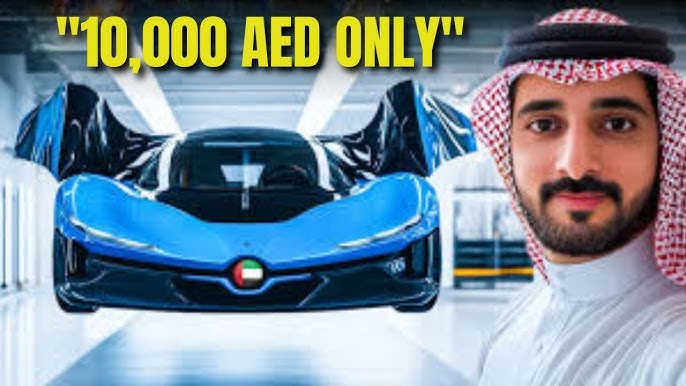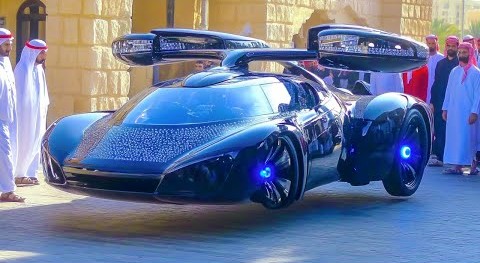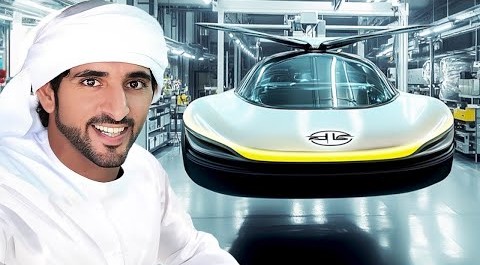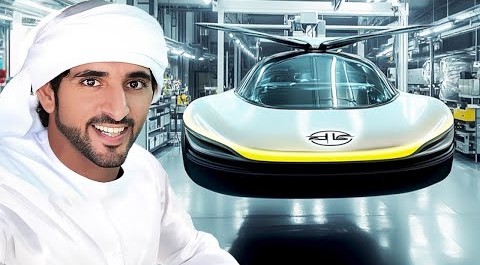For decades, the dream of a fully convertible flying car has captivated imaginations, often relegated to the realm of science fiction. However, recent developments in Dubai suggest that this dream is on the verge of becoming a reality. At this year’s Dubai Air Show, the world witnessed the unveiling of the first commercial flying car, a groundbreaking innovation that promises to revolutionize transportation as we know it. This article explores the implications of this technological marvel and how it could reshape urban mobility and our daily lives.
1. Dubai: A City of Innovation

Dubai has long been synonymous with progress and innovation. From its iconic skyscrapers to its ambitious infrastructure projects, the city has consistently pushed the boundaries of what is possible. With the introduction of the flying car, Dubai is once again at the forefront of technological advancement. The city has established itself as a hub for innovation, making it the perfect launchpad for this revolutionary mode of transport.
2. The Flying Car Revolution
The newly unveiled flying car is not just a novelty; it represents a significant leap forward in transportation technology. Designed to glide above the traffic that often clogs Dubai’s streets, this electric vehicle operates more like a drone than a traditional car, featuring vertical takeoff and landing capabilities. With its sleek design and advanced technology, the flying car offers an environmentally friendly alternative to conventional vehicles, setting a new standard for urban transport.
Imagine soaring above the stunning Dubai skyline, reaching your destination in a fraction of the time it currently takes. This new mode of transport could redefine how we live and work, opening up possibilities for urban planning and mobility that were previously unimaginable.
3. The Liberty Flying Car
In a bold partnership, Dubai-based aviation company Avetera has teamed up with Dutch firm PAL-V to introduce the Liberty flying car to the Middle East and Africa. This innovative vehicle seamlessly transitions from a road vehicle to an aircraft, capable of reaching speeds of 100 km/h on the ground and cruising at 180 km/h in the air. With a range of 400 to 500 km and the ability to reach altitudes of 11,000 feet, the Liberty is poised to become a game-changer in personal transportation.
While the current model runs on standard petrol, there are plans for electric versions as battery technology advances. The anticipation surrounding the Liberty is palpable, as it represents a significant step toward a future where flying cars are a common sight in our skies.
4. The Electric Vertical Takeoff and Landing (eVTOL) Market

The eVTOL market is rapidly evolving, with numerous companies investing in the development of flying vehicles. Major players like Uber and Boeing are making substantial investments, signaling that this technology is on the brink of revolutionizing transportation. With the first eVTOLs expected to take to the skies as early as 2025, we are witnessing the dawn of a new era in urban mobility.
As cities grapple with traffic congestion and the need for sustainable transportation solutions, eVTOLs offer a compelling alternative. The prospect of flying over traffic in eco-friendly vehicles is an enticing vision that has captured the attention of investors and innovators alike.
5. The Future of Air Taxis
The Liberty flying car, with its price tag of $799,000, is aimed at high-net-worth individuals and government agencies. However, its practical applications extend beyond luxury. The vehicle’s ability to navigate both land and air makes it invaluable for first responders and emergency services, providing rapid access to remote locations.
Dubai and Abu Dhabi are racing to integrate flying taxis into everyday life, with plans for air taxi services already in the works. The potential for transforming hour-long car journeys into 10-minute flights is not just a dream; it is becoming a reality.
6. Safety and Public Perception

While the excitement surrounding flying cars is palpable, questions about safety and public confidence remain. Building trust among potential passengers is crucial, especially as we transition from ground-based transportation to airborne vehicles. The industry must not only meet existing safety standards but exceed them to instill confidence in the public.
Companies like Joby and Archer Aviation are investing heavily in safety measures and rigorous testing to ensure that flying taxis can operate safely and efficiently. The future of aerial mobility relies not just on technological innovation but also on the trust that passengers will place in these new vehicles.
7. The Competitive Landscape
Dubai is not alone in its quest to become a leader in the flying car industry. With around 250 companies worldwide developing electric flying vehicles, competition is fierce. Major players like United Airlines and Airbus are making significant strides in the eVTOL market, with ambitious plans for urban air mobility.
As the industry evolves, the focus will shift from just the vehicles themselves to the infrastructure and regulations required for their successful deployment. Developing air traffic safety protocols and establishing sky ports will be essential for the widespread adoption of flying taxis.
Conclusion
The unveiling of the first commercial flying car in Dubai marks a pivotal moment in transportation history. As we stand on the brink of a new era in urban mobility, the implications of this innovation extend far beyond mere convenience. The potential for flying cars to reshape our cities, reduce traffic congestion, and provide sustainable transportation solutions is immense. As Dubai leads the charge, the world watches closely, eager to see how this technology will evolve and integrate into our daily lives. With ongoing advancements in safety, infrastructure, and public acceptance, the dream of flying cars may soon become a commonplace reality, transforming the way we navigate our urban landscapes. The sky is no longer the limit; it is the new frontier for transportation.



